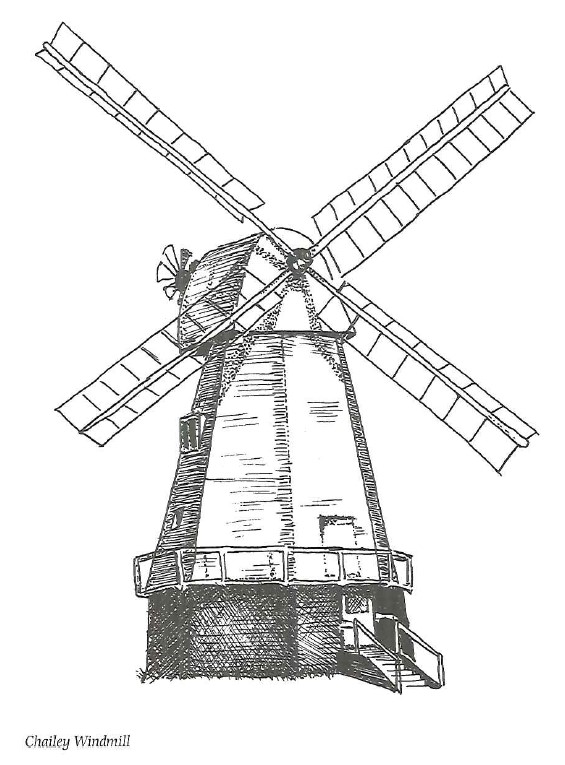The Mill on the Road is given as one source of the name; far more attractive than the basic ‘Red-Mould’ derived from the reddish tinge of the local ploughlands.
Certainly mills and millers have played their part in Rodmell’s past, though there is no mill in the village today – just the memory of its site on the Downs in the name Mill Road.
When the mill was demolished its timbers stayed on in the village, incorporated in the construction of a cottage.
Local folklore says that when the village blacksmith fashioned a new bell for the church tower it not only disturbed the slumbers of the windmiller but drove him to distraction. He cursed the church, the bell and the blacksmith, and finally in desperation sought the help of the village witch to end the clangour. She told him he could only stop the noise by tying a hair from the tail of the Devil to the bell’s clapper. Not an easy item to come by, and the miller resigned himself to living with the racket.
Many years later the miller lost his way in a sea fog which enveloped the flooded flatlands of the Ouse below Rodmell. Only by following the sound of the church bell was he able to find the ford which led to the village and avoid a watery grave. Filled with gratitude and contrition, he promptly presented the village with a new chime of bells.
In the churchyard, approached like the 12th century building itself, through the netball court of the village school, is the grave of the last miller of Rodmell, marked appropriately by a millstone. There is also a grave which tells the tragic tale of two lovers buried here 200 years ago. A young man died while trying to save a dog from drowning and the young woman died in her grief for him.
Virginia Woolf, the novelist and literary critic, lived in this peaceful place of flint and thatch for more than 20 years before making her final, sad journey to suicide in 1941 along the track which leads from the village street to the Ouse, her pockets bulging with rocks. Her husband Leonard lived on in
Monk’s House until his death and the property now belongs to the National Trust.
They are not too keen on change in this village. When Anthony and Susan Paice took over at The Holly in 1985 they were persuaded by the regulars to change the name back to the original Abergavenny Arms. We didn’t think The Holly Sounded right for a village inn 400 years old,’ said Susan.
A policeman’s lot was truly not a happy one on a May evening here in 1850 when a meeting of the ‘Rodmill Club’ at the Abergavenny Arms turned nasty.
Bad-tempered quarrelling among members became a general disturbance and young PC William Doust was sent for. No sooner had the bobby arrived at the pub than he was set upon by about 10 men’ and thrown to the floor. Then one
William Robinson thrust his fingers down the constable’s throat. Doust then appears to have attempted a hasty retreat, but was followed outside by Robinson with a drunken crowd behind him. The policeman later told magistrates: ‘I heard him say “a ring, a ring” and he pulled his clothes off. A party closed round, among whom was the prisoner. I was knocked down and I am quite sure the prisoner was one of the men who struck me. My staff was taken from me but I am not aware whether or not I was struck with it. I was under the care of a surgeon for more than a week.’ Presumably, the Rodmill Club was not the local branch of the Ladies’ Sewing Circle.
